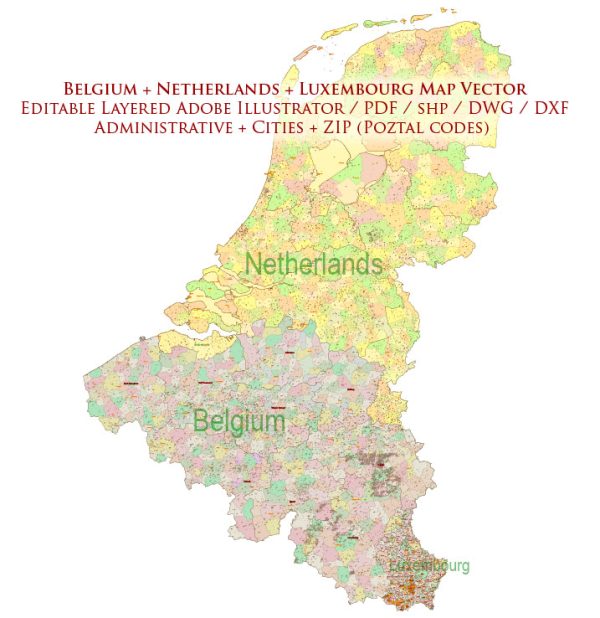Belgium, the Netherlands, and Luxembourg are neighboring countries in Western Europe, each with a unique political history. Here’s a brief overview of the political history of each:
Belgium:
1. Early History:
- Belgium’s history is marked by its location at the crossroads of Europe and its often-changing rulers.
- In the medieval period, the region was part of the Holy Roman Empire.
2. Spanish and Austrian Rule:
- In the 16th century, the Habsburgs, initially under Spanish rule and later Austrian, controlled the territory.
3. French Occupation:
- The late 18th century saw the region occupied by France under Napoleon Bonaparte.
4. Independence (1830):
- Belgium gained independence from the Netherlands in 1830 after the Belgian Revolution.
- The country adopted a constitutional monarchy.
5. World Wars:
- Belgium played a crucial role in both World War I and World War II, being invaded by Germany in both conflicts.
6. European Union:
- Belgium is a founding member of the European Union and hosts its headquarters in Brussels.
Netherlands:
1. Formation:
- The Netherlands has a long history, dating back to the medieval period when various territories were consolidated.
2. Golden Age:
- The 17th century is often referred to as the Dutch Golden Age, marked by economic prosperity, artistic achievement, and naval power.
3. Napoleonic Era:
- The Netherlands came under French control during the Napoleonic era but was reestablished as a kingdom under the House of Orange after Napoleon’s defeat.
4. Independence of Belgium (1830):
- The secession of Belgium in 1830 led to the establishment of the Kingdom of Belgium, leaving the northern part as the Kingdom of the Netherlands.
5. World Wars:
- The Netherlands remained neutral in World War I but was occupied by Germany in World War II.
6. Constitutional Monarchy:
- The Netherlands is a constitutional monarchy with a parliamentary system.
Luxembourg:
1. Early History:
- Luxembourg’s history is closely tied to its strategic location and its rulers, which included various European dynasties.
2. Burgundian and Habsburg Rule:
- Like Belgium and the Netherlands, Luxembourg was part of the Burgundian and Habsburg territories.
3. Union with the Netherlands:
- Luxembourg was linked with the Netherlands in the 19th century, under the House of Orange-Nassau.
4. Independence (1839):
- Luxembourg gained full independence in 1839, following the Treaty of London.
5. World Wars:
- Luxembourg was occupied by Germany during both World Wars.
6. Modern Era:
- Luxembourg is a constitutional monarchy with a parliamentary democracy.
- It has become a financial center and is one of the founding members of the European Union.
These three countries, despite their shared history and geographic proximity, have distinct political trajectories and have played important roles in the shaping of European history.


 Author: Kirill Shrayber, Ph.D.
Author: Kirill Shrayber, Ph.D.